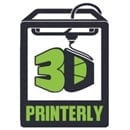How to Make 3D Printed Cookie Cutters Successfully
Making 3D printed cookie cutters is something that many users want to learn how to do, but it doesn’t seem so simple at first. I decided to look into the best techniques on how to make 3D printed cookie cutters and share it with you guys. To make 3D printed cookie cutters, you can easily…
